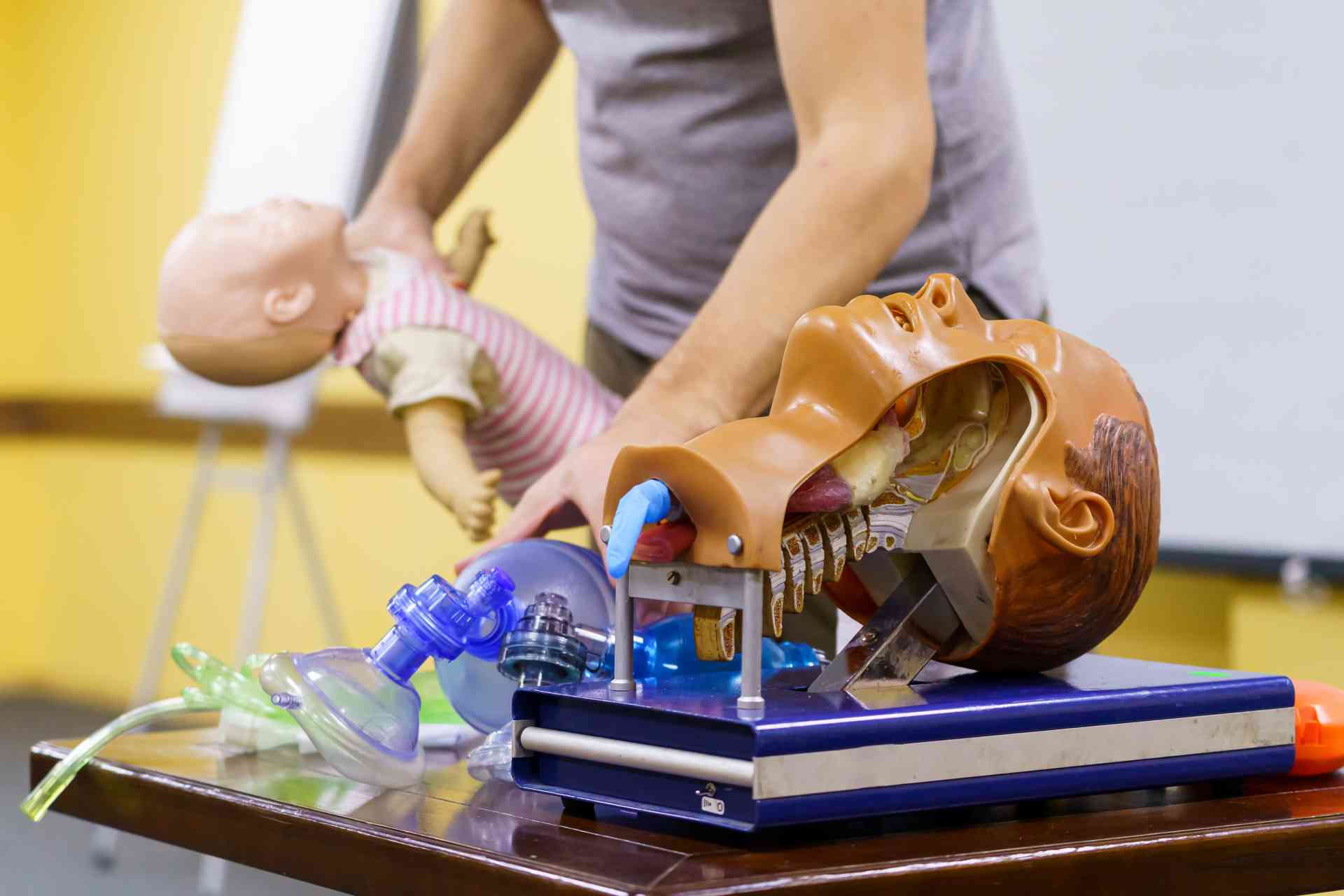Find the Best Pediatrician In Tirupati
Intubation and Ventilation
When is Intubation and Ventilation needed in a child?
Intubation and ventilation may be necessary for children in various conditions, such as:
- 1. Severe respiratory problems requiring emergency treatment: When a child experiences significant respiratory distress, urgent intervention is essential. Treatment for pediatric critical care in Tirupati can provide the necessary support in such cases.
- 2. Sedation during surgery: Children may require intubation and ventilation to assist with breathing while under sedation for surgical procedures. The children's hospital in Tirupati offers specialized services to ensure their well-being.
- 3. Severe asthma attacks: In instances of severe asthma exacerbations, intubation and ventilation may be necessary to manage respiratory function effectively. Pediatric respiratory experts, including pediatric neurologists in Tirupati, are available to provide the required care.
- 4. Serious injuries, near drownings, or severe viral illnesses: In situations where a child is unconscious or has injuries preventing sufficient oxygen intake, intubation becomes vital. Prompt intervention at a trusted children's hospital in Tirupati can ensure optimal treatment.
For older children in trauma cases with clear airways, oxygen administration through a face mask or nasal tube may suffice, eliminating the need for intubation.
After the procedure, certain expectations should be considered:
- 1. Ventilator adjustment: Once intubated, the doctor will set the ventilator to deliver the appropriate volume and speed of air to the child's lungs. This personalized approach can optimize treatment for pediatric critical care in Tirupati.
- 2. Gradual weaning off the ventilator: As the child's lung function improves, the ventilator settings will be modified to facilitate a gradual weaning process. This allows the child to transition safely to normal breathing without relying on mechanical support.
The duration of ventilator usage can vary based on the child's specific health needs and overall condition. Some children may require ventilation for a few hours, days, or even months. By receiving care at the best children's hospital in Tirupati, children can access comprehensive treatment tailored to their individual requirements.
Central line insertion
How does a central line help?
The central line, along with the expertise available at the best children's hospital in Tirupati, including pediatric neurologists in Tirupati, offers several advantages:
One notable benefit is the central line's longevity, allowing it to remain in place for an extended period, ensuring uninterrupted treatment at the children's hospital in Tirupati.
Through the central line, pediatricians at Ankura Hospital Tirupati can easily administer large volumes of fluids or medications, providing efficient and effective care to young patients.
Moreover, the central line serves as a valuable tool for pediatric neurologists in Tirupati, allowing them to obtain necessary blood samples when required for diagnostic purposes.
In cases where children necessitate long-term antibiotics, have experienced excessive blood loss, or require substantial fluid replacement, the decision to insert a central line is often made by the experienced medical professionals at the best children's hospital in Tirupati.
Understanding the procedure is crucial for parents. Prior to central line insertion, the child receives anesthesia to ensure their comfort during the process. At Ankura Hospital Tirupati, pediatric specialists utilize advanced techniques such as ultrasound or X-ray to precisely identify the vein, enabling the placement of a specially designed catheter for children.
By combining the expertise of pediatric neurologists, pediatricians, and a dedicated team at Ankura Hospital Tirupati, the use of a central line becomes an integral part of comprehensive and specialized care for children, providing long-term accessibility, efficient delivery of fluids and medications, and precise diagnostic capabilities.
PICC insertion
Advantages of PICC line
It can stay in place for a very long time (up to 3 months or more) and thus multiple insertions can be prevented in children requiring long-term therapy.
- Reduces the number of needle insertions in your child
- Large amount of fluids and medicines can comfortably be given at once to children in such a case.
In which conditions can a PICC line help?
- In serious infections where intravenous antibiotics are needed for weeks
- In kids who have cancer, so that they can receive chemotherapy and get blood tests done through it
- In children requiring multiple blood transfusions
- In children needing intravenous nutrition
What to expect during PICC line placement?
- The following steps are followed during the procedure of PICC line placement:
- Area of insertion of the line is cleaned thoroughly
- Ultrasound is used as a guide for line insertion till a point near the heart
- A radiograph is taken to check the line after insertion
- A dressing is placed over the line after the procedure
When to call the doctor?
- When at home with the PICC line, you can call your doctor if you notice:
- Fever.
- Redness or swelling near the PICC line.
- Pain or tenderness near the PICC line.
- If the line gets blocked and cannot be flushed.
Intercostal drainage (ICD)
What to expect during the procedure?

- An ultrasound or CT scan is done to evaluate the amount and location of the fluid.
- Your doctor will inject a numbing medicine at the site of the drainage.
- A small needle is guided through the skin into the fluid that needs to be drained.
- The fluid filled up between the lungs and the chest wall is aspirated out with the help of a syringe.
- Your doctor may place a catheter at the site if continued drainage id required.
- After the procedure, small portion of the chest fluid taken out is sent for laboratory examination, to know the cause of fluid accumulation in your child.
Activity restrictions after the procedure
In case a catheter has been placed in your child for drainage of fluid your child will need to avoid any activities that can cause a pulling effect at the catheter. Children in whom catheter has not been placed can resume normal activities in a day or two after the procedure.
Nose and Ear foreign body removal
What can get stuck in the nose and ear?

- Insects
- Toys
- Buttons
- Small pieces of crayons
- Small batteries (button batteries often found in toys)
- Pieces of tissue
- Clay (which children play with)
- Small piece of Erasers
- Food
How can you know if something is stuck in your child’s nose and ear?
At times, objects placed in the ear may not cause any symptoms. However, some objects, such as food and insects, may cause pain in the ear, redness, or drainage. Hearing may be affected if the object stuck in the ear is blocking the ear canal.
The most common symptom in a child with a foreign body in the nose is nasal drainage. Such drainage appears only on the side of the nose where the object is stuck and often has a bad odour. At times your child may also have blood discharge from the nose
After careful examination, your doctor will remove the object stuck in the nose and ear using specific instruments to reach the inside of the nose and ear, and suction machines. Your doctor may also prescribe your child, ear drops, nose drops, or antibiotic ointments as needed.
Lung USG
How is the procedure done?

Your doctor will use an ultrasound gel during the procedure which is placed on the transducer and the skin to allow smooth movement and to eliminate any air between the skin and the transducer for best sound conduction.
Once the images are produced your doctor interprets the scan and gives you the report.
When can your child need a lung USG?
Lung USG can be prescribed by your doctor in case they suspect a problem such as:
- Lung pathology
- Pathology around the lung
- Shortness of breath in the child
- Severe cough
- Shock
Lung USG is a low-cost and effective procedure that can be performed on your child without any harm.



 It can stay in place for a very long time (up to 3 months or more) and thus multiple insertions can be prevented in children requiring
It can stay in place for a very long time (up to 3 months or more) and thus multiple insertions can be prevented in children requiring